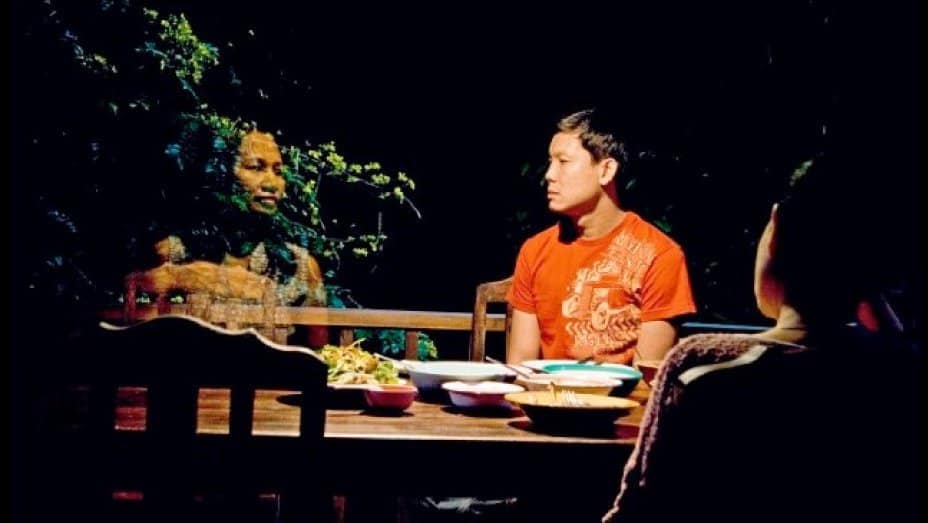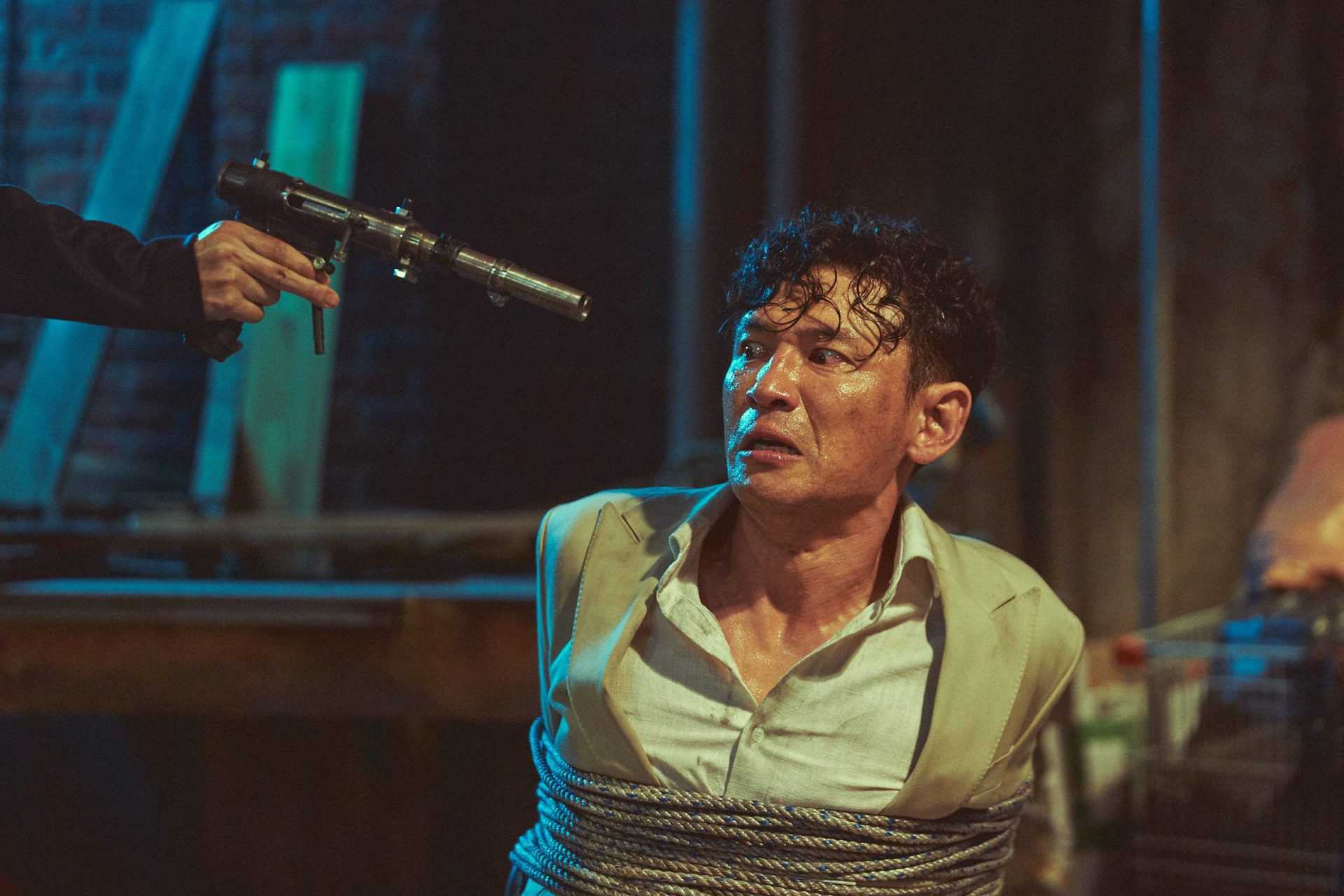“Facing the jungle, the hills and the vales, my past lives as an animal and other beings rise up before me.”
Even though he had been gaining a reputation over the years, it was not until “Uncle Boonmee…” won the grand prize at the Cannes Film Festival, Thai director Apichatpong Weerasethaul received wider recognition. While his other five features including “Mysterious Object at Noon” (2000), “Blissfully Yours” (2002) or “Tropical Malady” (2004) had come from a similar foundation, to be honored for a work like “Uncle Boonmee…” must have been very special to the filmmaker given the amount of time and energy he had spent on the project long before he worked on most of his other films.
Buy This Title
In his notes on the so-called “Primitive Project”, a video installation by the director which, for example, is part of an exhibition at the Tate Modern, Weerasethakul recalls some of the most important inspirations for the film. Although the theme of the jungle as a place of mystery, faith and rebirth is one of the essentials of his work, it was not until he spoke to Buddhist monks about the nature of their belief that he discovered the true relevance of nature. When the monk gave him the book “A Man Who Can Recall His Past Lives” he was immediately impressed with the central character, a man who would come to the temple where the monk lived to pray, who was able to access stories of his past lives dating back several centuries. Weerasethakul writes: “He could see and replay his past. He didn't need cinema. In fact, we don't need cinema, if we can train our minds to ‘see' like he did. Sadly, most of us are too crude, we are primitive beings.” The installation, as well as the eventual film, are in some ways tributes to this man, but also an approach to this notion of time and memory expressed in the book.
Additionally, the director found himself going back to his own past when he made the film. While the central character of Uncle Boonmee (played by Thanapat Saisaymar) is based on the character in the book, there are also similarities between him and the director's father who died from a kidney disease like the one Boonmee suffers from. In the end, as Werrasethakul claims in an interview included in the UK Blu ray-release of “Uncle Boonmee…”, the film employs a view on the world, the people and the jungle, similar to when he was a child. During this time, he remembers, the world was more of a miracle, a place for wonders for him, and the film should represent this perspective.

Uncle Boonmee (Thanapat Saisaymar) has invited his sister Jen (Jenjira Pongpas) and his nephew Tong (Sakda Kaewbuadee) to his farm in the country. Even though the two are happy with the change of scenery, the fruit and honey, growing on the farm, especially Jen is quite worried about her brother's health.
On several occasions and one dinner, Boonmee asks for his sister to look after the place once he is gone. During the dinner, the ghost of Boonmee's dead wife and his son, who had been missing for many years, join them. While met with understandable surprise, the two help Boonmee to recall their time together, his lives before this one and prepare him for the inevitable transition which is to come soon.
One can judge the kind of approach Weerasethakul has chosen for his new film as soon as it heads into the jungle. In “Blissfully Yours”, which also employs the feature of dual narratives, the division between the two narratives is clearly marked by the characters' drive into the wilderness of the jungle. Apart from this sudden change in visuals and sounds, the movie arguably also benefits from the change, one which, in retrospect, is more in line with the chasm of urban and rural spaces in the film by the director.
In the case of “Uncle Boonmee…” there is no such shift in terms of setting as it all plays in or around the farm of the central character. Like with “Tropical Malady”, the focus is less with the character and more with the jungle as a foreign and enigmatic space on the one hand, and a place of life and death on the other. In the almost obligatory long takes, cinematographer Sayombhu Mukdeeprom (who is credited as one of the three cinematographers of the film) captures the vast dimensions of the natural maze presented to the viewer, an impression highlighted by the use of sound. The various sounds of animals, water as well as the sporadic gust of wind in the trees define an audiovisual palette Weerasethakul and his crew repeatedly refer to and/or utilize in the course of the film.

Generally speaking, the use of space and sound establishes the jungle as a character in its own right within the film. Even more, the nature of the jungle (or of the spaces shown in the film) are most likely integral parts of the characters themselves, a reflection of their desires, their longing, their sexuality and their emotions. In an episode of the film focusing on the story of a princess she sees her reflection in a small pond, an image of her past self and past beauty. Deeply embedded within the narrative pattern of “Uncle Boonmee…” the existence of the past, our memories is apparent, or rather omnipresent like the jungle. Wishes and desires define a certain percentage of our existence, and thus our lives and what surrounds them.
Interestingly, the jungle as a primordial space has introduced the theme of slow regression in the works of the director. However, in the case of Weerasethakul, this kind bears no negative connotation, but instead symbolizes a full circle in the lives of people. Naturally, as with most of the features by him, the place is the focal point of time, of life and death making the presence of ghosts and the mysterious dark figures frequently shown in the film parts of a harmonious coexistence. Consequently, their appearance is met by surprise, even shock, but this quickly ceases and they become part of a family dinner discussing matters of both life and death.
At last, one should mention the kind of experience Weerasethakul has in store for his audience. Similar to all of his other films, the notion of fully intellectualizing its content will ultimately fail, or at least ignore the most important quality of them. In this context, this director is perhaps best compared to artists like Ingmar Bergman or Andrei Tarkovsky, for his vision is best enjoyed as pure expression, pure experience. Blending layers of time and perception is closer to the nature of our memory, of how it progresses over the course of our lives, and what kind of traces we leave behind when we are long gone.

“Uncle Boonmee Who Can Recall His Past Lives” is a enchanting and beautiful movie about the nature of time, memory and our perception of the world. Weerasethakul proves not only his magnificent skill as a director, but also his reputation as one of the most important names in contemporary cinema. It is a unique vision, a contemplation on the foundations of our lives and our world, one which maintains an almost childlike sense of the wonders of this earth.
Sources:
1) Weerasethakul, Apichatpong (2009) The Memory of Nubia. A note on the Primitive Project
2) An interview titled “Uncle Apichatpong” is included in the UK Blu ray-release of the film
3) https://www.tate.org.uk/art/artworks/weerasethakul-primitive-t13564, last accessed on: 08/27/2018
















